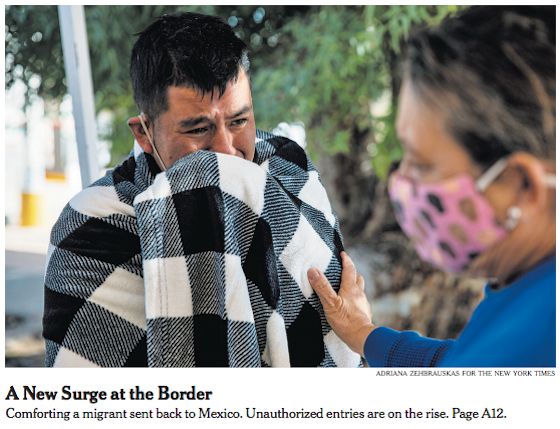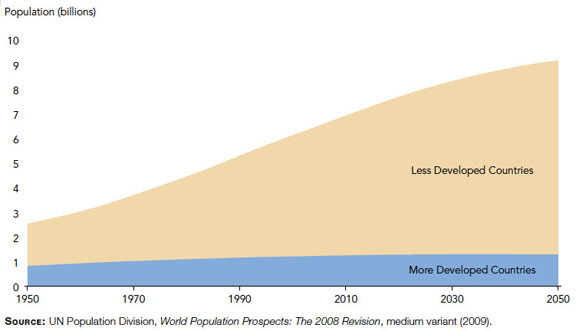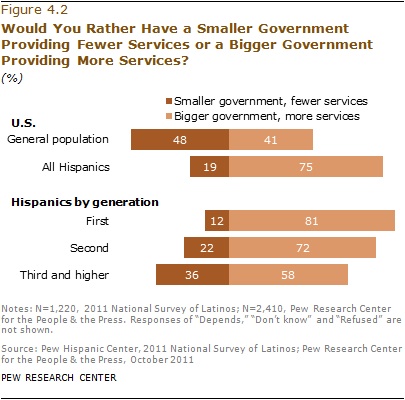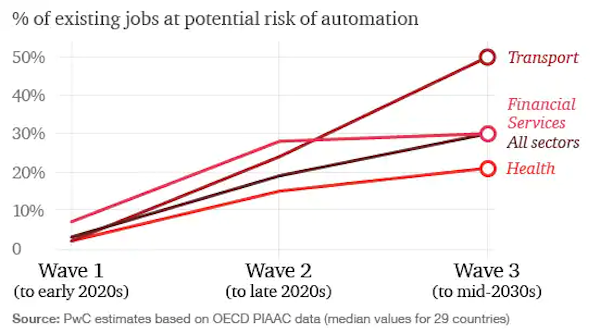There’s been interesting media activity over the last few days about Red China’s interest in human DNA across the globe. On Sunday, CBS’ Sixty Minutes dedicated two segments to the subject: China’s push to control Americans’ health care future and Companies and foreign countries vying for your DNA.
A couple days earlier, Breitbart previewed the programming: Report: ‘Huawei of Genomics’ Tried to Use Coronavirus Tests to Collect U.S. DNA Data, which noted:
[Bill] Evanina and other security experts warned specifically about the danger that if China can collect tremendous amounts of medical data about Americans, including their DNA, it could be able to monopolize the production of diagnostic equipment and medicines needed to treat them, gaining increasing amounts of leverage over the U.S. population, its government, and American industry. . .
The Chinese government is reportedly frantic to collect DNA from its own citizens, without giving any reasonable explanation for why it needs such extensive data.
Don’t we already know that allowing unfriendly Red China to produce medical supplies and pharmaceuticals for American use is a really bad idea because it endangers the health and safety of citizens? What’s new now?
In the current case, there has been a fair amount of media attention paid to a somewhat vague threat. Perhaps the press is holding back so it won’t be accused of anti-Chinese racism.

China expert Gordon Chang has been more specific about what Beijing might be cooking up. At around 4 minutes into the video below, Chang explained on Fox News’ Sunday Morning Futures what might be transpiring behind the curtain:
MARIA BARTIROMO: And you said that the most important thing to focus on is the gene editing — they’re making their military superhuman.
GORDON CHANG: Yes, well they’re talking about a new type of biological warfare of specific ethnic genetic attacks which means that the next disease from China could leave the Chinese immune, but affect only us and that means it could cripple societies around the world. So we’ve got to be concerned about the next disease, and Biden isn’t even challenging China on covid-19, so we’ve got to worry about where we’re going to be on the next pathogen.
During a December interview, Chang similarly opined, “China is probably trying to develop diseases that target not just everybody, but target only certain ethnic or racial groups.”
Whether the Wuhan virus was an accident or purpose-built, the world pandemic has worked out quite well for Red China — America has suffered a serious recession and President Trump was apparently defeated in a rather haphazard election. So why wouldn’t China cook up more of the same in the future, as Gordon Chang suggests? The next pathogen need not kill millions to cripple the nation, it just needs to sicken many of the people and upset the normal functioning of the economy.
Some robot companies build machines that can walk around, as opposed to those that stay put and perform precise tasks in manufacturing.
Boston Dynamics creates walk-about robots with two legs and four — both of which are good.

We humans walk around all the time and think nothing of it. But machines must be programmed to readjust constantly because of the changing effect of gravity on a moving physical object.
One important date in automation history was the 2011 Fukushima nuclear disaster which showed that mobile robots were needed in situations where humans were endangered by their mere presence.
Early attempts at building ambulatory robots were not alway successful. Here’s a fun video dated 2015 from the DARPA Robotics Challenge, a demanding competition that focused on disaster and emergency-response scenarios — where not all contestants made the grade:
Six years have passed, and Boston Dynamics just released a video showing off some very impressive dance moves — indicating how much progress has been made in the world of robots:
In any case, robots are increasingly becoming more capable at replacing human workers by the millions, so America and the rest of the West won’t need to import any more foreigners for basic labor, because
Automation Makes Immigration Obsolete.
It’s interesting how Democrat governors across the nation have instituted more destructive pandemic policies than Republicans. For example, California under D-Gov. Gavin Newsom has suffered months of lockdowns that have caused many business to fail while Florida has been getting along with fewer restrictions under Ron DeSantis (R). You might suspect that Democrat leaders don’t want a successful economy for their states and the nation. In reaction, California citizens have instituted a recall petition for Newsom (RecallGavin2020) that seems to be moving along.
The recent announcement of two vaccines becoming available was met with public relief that the government-mandated home imprisonment would soon end, but in the Swamp regions of America and beyond, there is a desire to extend the enhanced control over the citizens. We hear warnings from experts of all sorts that the vaccine will not solve the problem, at least for a long time, so people should remain masked, quarantined and obedient. Here’s a recent headline from the World Health Organization: Vaccination no guarantee of virus eradication: WHO officials.
So don’t imagine a return to normal life is at hand.
Below: leftist community organizer Saul Alinsky was an early proponent of taking political advantage of difficult circumstances.

Tucker Carlson had an interesting discussion with Marc Morano last week about the big picture of the virus lockdown and how that strategy is likely to be used by the left again for controlling the public.
“What is a lockdown but a planned recession by the government?” asked Morano rhetorically.
JOE BIDEN (film clip): I hope you won’t hold against me, but I am a hard coal miner — anthracite coal. Scranton, Pennsylvania. Okay, that’s where I was born and raised, and it’s nice to be back in coal country.
TUCKER CARLSON: That was Joe Biden in 2008 describing his many years underground as a coal miner in the hills of northeastern Pennsylvania — that’s been 12 years he managed to survive black lung. He’s also changed his perspective on energy.
BIDEN: Today I’m pleased to announce a team that will lead my administration’s ambitious plan to address the existential threat of our time — climate change. Folks we’re in a crisis — just like we need to be unified nation in response to covid-19, we need a unified national response to climate change. And from this crisis — from these crises, I should say, we need to seize the opportunity to build back and Build Back Better than we were before.
CARLSON: “From this crisis, we must seize the opportunity.” Marc Morano publishes Climate Depot; we’re happy to have him on tonight. Mark, thanks so much for joining us. If you look at the polling on this subject — there are a lot of crises unfolding in the United States right now, climate change is not one that rates very high on most people’s lists of pressing concerns, but the Biden people believe it’s the central crisis. What do they plan to do to respond to it, if you could sum up for us?
MARC MORANO: Well first of all in polling, the Harris CEO of Harris Polling lamented that climate went from a top-tier issue in his poll to second to last of all issues in this past year. So they’re freaked out that no one is talking and no one cares about climate among the public, but what they’re trying to do, and you saw Biden allude to it there with build back better, they are trying to essentially use the covid lockdown model for the climate emergency model, and they’re going to go from covid lockdowns to climate lockdowns. And if you look at it, Senator Merkley came out today and is urging a President Joe Biden to declare a national climate emergency which would give him emergency powers, and he could bypass democracy much the same way a lot of the blue state governors have done with the covid lockdowns.
CARLSON: I’m kind of confused on on the most basic level. So we’ve had warming and cooling periods since the earth itself cooled. We’ve had a number of ice ages and then warming periods after, so if you accept that we’re in a warming period — and I’m willing to believe that — why are we certain it’s human-caused and therefore reversible and not just yet another warming or cooling period, honestly?
MORANO: Well it’s a lot of this goes back to the United Nations. In 1988 they started their climate panel, and they had their every incentive was to say not only has carbon dioxide a control knob but it’s causing a problem. They get to come up with the scare of CO2 and they get to come up with the solution as well, but if you look at the data when people say oh well the UN has determined that most of the warming since 1950 is human — that’s determined by a show of hands. It’s not some scientific paper. It’s based on models and speculation — expert judgment which we’ve seen in the covid how much expert judgment can matter — sometimes it can be wildly off. But you know you can talk to geologists who study the history of the earth and they will tell you that we are in the 10 percent coldest period of the earth geologically speaking. Ninety percent of the earth’s history didn’t have ice on either pole, so most of the scare comes in predictions of the future, and that’s what the UN and the climate scare mongers like to focus on.
CARLSON: Do you think the average person knows that we’ve had innumerable, probably literally countless warming periods over the eons, and they’ve all been naturally occurring? I never hear anybody say that; I’ve never heard anybody present actual proof that this is different from those ever, ever; I’ve never had anybody do that. Why?
MORANO: There isn’t in peer-reviewed studies. You go back to the Roman warming period down to about 080, you go to the medieval warming period. You could argue the temperature’s been the same or slightly declined since those periods, depending on what study, what proxies you want to do. The reason is they needed an emergency. Here’s the bottom line, Tucker. For decades UN climate activists and climate campaigners and Al Gore have toiled for attention and government action. They failed when Obama was president to get Cap and Trade. They failed multiple times. What’s happened is covid has opened their eyes. They went from jealousy to now they’re learning from it, to now they’re all in on the covid model. So I went to UN conferences for two decades. They talked about planned recessions in order to fight global warming, de-growth movement and now — what is a lockdown but a planned recession by the government? So the climate activists are all in on this covid model — climate lockdowns coming from covid lockdowns and that’s exactly what Joe Biden’s being advised to do.
CARLSON: Boy I wish I could dismiss what you just said as a conspiracy theory, but given everything we’ve seen, I can’t. It does seem that way. Mark, thank you, thank you for that.
Senator Rand Paul is a serious thinker as well as an MD and is worth a listen. During a Thursday interview with Fox Business host Maria Bartiromo, he opined that persons found to be voting illegally should be imprisoned because “If you don’t put people in jail for stuffing the ballot box, then you will get more of it” — basic psychology there. Punish bad behavior to end it because ignoring the crime just incites more in the future. Jail terms would absolutely get the attention of Democrat criminals seeking to subvert America which was once proud of being “a nation of laws.”

The senator also told a good story about the young Lyndon Johnson with a shoebox full of fake votes, though not quite enough as it turned out, since his opponent had more. Paul could have mentioned that Johnson had the sarcastic nickname “Landslide Lyndon” in Texas and beyond because of his later election fraud that succeeded in grabbing his first Senate seat which is known as the Box 13 Scandal.
As it happens, voter fraud is rather common. The Heritage Foundation has compiled a database of over 1300 cases which illustrate the energy and ingenuity which some apply to cheating their way into office.
Finally, Senator Paul blows the whistle on the mask obsession. The media has convinced people that masks are the magic prevention against getting sick, and anyone not wearing one is an enemy of society. He considers it “malpractice” for TV doctors to recommend a medical strategy that doesn’t work.
MARIA BARTIROMO: Joining me right now is Kentucky Senator, member of the Senate Homeland Security and Governmental Affairs Committee and Senate Foreign Relations Committee, Rand Paul. Senator, it’s great to see you this morning. Thanks very much for being here. You were at that hearing yesterday. Take us behind the closed doors — what did you take away from that?
PAUL: I would say it was one of the most exciting hearings I’ve been to in years. It was explosive; there was raw emotion on both sides, but there is a serious point here, and I think if you want less fraud in our elections you want the elections to be legitimate and considered to be legitimate, you have to punish those who committed fraud. So 1500 people were ineligible to vote because they were deceased in Nevada — whoever did that needs to go to jail. 4,000 illegal aliens voted — they need to not be allowed to vote but whoever allowed it to happen needs to go to jail. it needs to be fixed so we really do have a lot of work to try to make sure our elections are legitimate.
This is not new. I remember the famous story about LBJ. It’s midnight, and he’s got a scotch in one hand, he’s got his illegal votes in a shoebox in the other, and he turns them in at midnight saying, “We’ve won we can turn in our illegal votes and we’ve got just enough,” but then his opponent turns his illegal votes in at two in the morning and LBJ vowed that night never to turn his illegal votes in until the other guy had already turned his in, and so we have a history of cheating in our country. In my state a guy named Pritchard who is part of the kitchen cabinet for FDR went to jail, but if you don’t put people in jail for stuffing the ballot box then you will get more of it.
So yeah, I think the hearing was important and just the beginning. The problem we have in our country is courts don’t like to hear this stuff during elections and right after elections. The history is bad. My dad had an election stolen in 1976, and the courts would never give us justice and never listened to the facts. They kept doing what they’re doing to President Trump which is throwing the cases out based on procedural technicalities but not on the facts. Continue reading this article
The New York Times correctly envisions a Biden administration as having a far more forgiving border, unlike the illiberal sovereignty enforcement of the current president. In fact, the cartels are “telling migrants ‘border will be open’ when Biden takes over” according to Rep. Henry Cuellar.
The Times’ December 14 front page featured a sob-story style photo of a sniffling illegal alien about to be returned to his actual country of citizenship.

We wouldn’t expect him to work with his fellow citizens to improve their home societies, as was the case in years past: Latin America had many freedom fighters who worked for positive change in earlier centuries. But that was before it became easy to invade the US, steal jobs and obtain free stuff from the welfare office.
Interestingly, the article quotes one foreigner early on that “We are not bad people. We come to work.” But there is no mention that millions of Americans are still jobless because of the China virus shutdown of businesses. The press ignores that there is no need for more workers during this time of high unemployment among citizens. Nevertheless, adding more immigrants remains a top task for scribblers.
Once again, the media pursues its Diversity First agenda rather than supporting law and order. The press evidently believes that the United States should be welfare office to the world, or as the Times remarks “a safe haven for people fleeing persecution.”
Remember that the Third World population continues to grow by millions every year, so the pressure to invade the US will only increase.

As Biden Prepares to Take Office, a New Rush at the Border, New York Times, December 13, 2020
SASABE, Ariz. — By the time the Border Patrol spotted the two migrants in a tangle of shrubs on a frigid December morning, they had been meandering aimlessly in the desert for six days. They had lost their way on the final leg of a monthlong journey from Guatemala, encountering only herds of javelinas, lone coyotes and skin-piercing cactuses as they staggered north. Exhausted, thirsty and cold, they did not resist arrest.
Less than two hours later, agents had already processed them and deposited them back across the border in Mexico. Alfonso Mena, his jeans ripped at the knee, shivered with his companion on a bench less than 300 yards from Arizona and sobbed uncontrollably.
“What wouldn’t you do to help your children get ahead?” he said. A landscaping job in Houston awaited him, he said, and his family was counting on him. “We are not bad people. We come to work.”
It was not the first time he had tried to enter the United States. And it was unlikely to be the last.
Unauthorized entries are swelling in defiance of the lockdown President Trump imposed on the border during the pandemic and shaping up as the first significant challenge to President-elect Joseph R. Biden Jr.’s pledge to adopt a more compassionate policy along America’s 1,100-mile border with Mexico.
After a steep decline in border crossings through much of this year, interceptions of unauthorized migrants along the Arizona-Mexico border are climbing again: Detentions in October were up 30 percent over September, and .the figure in coming months is expected be even higher, despite the biting cold in the Sonoran desert.
The rising numbers suggest that the Trump administration’s expulsion policy, an emergency measure to halt spread of the coronavirus, is encouraging migrants to make repeated tries, in ever-more-remote locations, until they succeed in crossing the frontier undetected.
And they are likely the leading edge of a much more substantial surge toward the border, immigration analysts say, as a worsening economy in Central America, the disaster wrought by Hurricanes Eta and Iota and expectations of a more lenient U.S. border policy drive ever-larger numbers toward the United States.
New migrant caravans formed in Honduras in recent weeks, defying that country’s coronavirus-related lockdown in a bid to head toward the United States but were prevented from leaving the country. And the pandemic has decimated livelihoods in Mexico, prompting a rise in migration from that country after a 15-year decline.
“The pressures that have caused flows in the past have not abated and, in fact, have gotten worse because of the pandemic. If there is a perception of more-humane policies, you are likely to see an increase of arrivals at the border,” said T. Alexander Aleinikoff, director of the Zolberg Institute on Migration and Mobility at the New School in New York.
“That doesn’t mean that those flows cannot be adequately handled with a comprehensive set of policies that are quite different from Trump’s,” said Mr. Aleinikoff, “but you need a well-functioning bureaucracy to handle it.”
Mr. Biden has vowed to begin undoing the “damage” inflicted by the Trump administration’s border policies. He has said he will end a program that has returned tens of thousands of asylum seekers to Mexico and restore the country’s historical role as a safe haven for people fleeing persecution. (Continues)
It’s nice to see Tucker Carlson talking about immigration again, something that has fallen off his list of subjects recently. Perhaps he thought President Trump had it covered, even though excessive immigration threatens the historic nature of America.
At any rate, on Friday Tucker interviewed Andrew Arthur, a former judge who is currently affiliated with the Center for Immigration Studies. His CIS bio notes employment with the Immigration and Naturalization Service and eight years working as an immigration judge in Pennsylvania. So Arthur knows the topic from inside the system.

One aspect of this discussion lurking in the background is the preference of Democrats for foreigners over Americans. As it happens, hispanics prefer the Democrat philosophy of Big Government, as shown in a 2012 Pew Research survey. So that correlation of viewpoints works out well for Democrats, but not so much for Americans as a whole.

A Democrat-run government with a President Biden would definitely put immigration on the front burner again — and not in a good way.
TUCKER CARLSON: Welcome back to a special edition of Tucker Carlson Tonight. Republicans were not able to pass any kind of immigration bill restricting immigration, protecting our borders over the past several years, but if Democrats take control of the Senate on January 5th, they won’t be quite as passive. The first thing they will do is to fundamentally change our immigration system — open the borders to the rest of the world. They’re not hiding this; they’ve been open about it for months.
JOE BIDEN (TV clip): Some of it’s going to depend on the kind of cooperation I can or cannot get from the United States Congress, but I am going to make a commitment: in the first hundred days I will send a immigration bill to the United States Senate with a pathway to citizenship for over 11 million undocumented people in America.
CARLSON: First of all it’s not 11 million — you’d have to be 119 years old to think that — it’s over 20 million. But the macro point is this: millions of Americans have been looking for work for so long that they’ve given up looking; they’re not even listed on the unemployment stats. Now Democrats plan to give them more competition in the labor market. So who’s benefiting from this exactly? Not Americans. Andrew Arthur is the Resident Fellow in Law and Policy for the Center of Immigration Studies, and we’re happy to have him on tonight. Andrew, thanks for coming on.
ANDREW ARTHUR: Thank you for having me.
CARLSON: Who does benefit from this exactly?
ARTHUR: Well. the people who benefit from this are big business. Wealthy people benefit from open borders, essentially limitless immigration because for them everything comes cheaper. Food is cheaper; you go to the grocery store, rather than paying you know 39 cents for a head of lettuce, you pay 35 cents for a head of lettuce. You can get your lawn cut cheaper, you can get your house painted cheaper, but the people who suffer the most, Tucker, are the people who are at the margins of society, the people that we you know usually hear that these folks care about — disadvantaged Americans, inner city youth, members of minority groups and immigrants who haven’t adjusted to life in the United States yet. Those are the people who are in direct competition because most of the people who enter the United States illegally are people who don’t have high levels of education, don’t have a lot of work skills. Now there’s nothing you know wrong with that — my father never went to college, worked in a steel mill. But when you bring in a huge mass of uneducated unskilled individuals to directly compete against Americans, those Americans suffer.
CARLSON: And it’s also true at the higher end. I mean our schools were bad before covid; now the schools are just shut down and kids are learning nothing. Nobody seems to care and instead of fixing that, they’ve decided, well we’re just going to bring in more educated people from India and China to do jobs that Americans aren’t qualified to do. I mean it kind of removes any incentive to fix American schools, doesn’t it?
ARTHUR: It really does, and you know there’s this canard that you know we need more STEM graduates. A few years ago the the Census Bureau did a survey in which they found that about 25 percent of people who had STEM degrees were working in a STEM job, and we’ve seen this over and over again. Computer programmers are brought in; IT people are brought in from abroad on temporary visa programs, and even right now the United States Congress is considering a bill that would make it so much easier for Big Tech to bring in those tech workers to replace our students that we encourage to go get tech jobs for the 21st century. Well, those jobs aren’t going to be available to them if this happens. So you know these are things that Americans really need to think about if they have kids, and yes we’ve seen the quality of our own schools go down. We need to be putting more money into educational opportunities, but we also need to have jobs for those students to take. I’ve seen it you know again and again in cities across America.
CARLSON: Only 25 percent of STEM graduates held jobs in STEM in science and technology — that’s an amazing statistic, Andrew Arthur. I appreciate you coming on. Thank you.
And here’s the 2014 Census Bureau survey of STEM graduates and their employment: Census Bureau Reports Majority of STEM College Graduates Do Not Work in STEM Occupations.
Director of National Intelligence John Ratcliffe appeared on Fox News’ Sunday Morning Futures show, and he brought quite a list of particulars about the aggression of Red China against the whole world, most recently by unleashing the coronavirus which has caused the deaths of over a million and crushed the global economy.
Here’s some of the transcript:
JOHN RATCLIFFE: Well Maria, you talked about the op-ed earlier this week in the Wall Street Journal. It really was more of an intelligence piece; it was an intelligence briefing to the American people about our greatest national security threat, China, how they’re threatening us economically, militarily, technologically, and you just highlighted one of the ways that shows how China is a threat and that’s this Covid-19 pandemic that the Chinese communist party — when they knew about its transmissibility — allowed it to go from China to the rest of the world.
They intentionally and deliberately downplayed it in their country, pressured world health organizations and allowed it to spread to the rest of the world, and that didn’t just have the effect of wrecking the global economy. It didn’t just have the effect of killing millions of people, including hundreds of thousands of Americans. It also had grave political consequences.
Here, in the United States, the pandemic influenced a lot about how people voted, but also how they had to vote. As a result of the pandemic, we saw state legislatures as little as 90 days before the election adopting new voting procedures. Essentially we had universal mail-in balloting across this country in a way that we hadn’t seen before, and to that point, almost 73 percent of the American people this year voted before election day, a good percentage of those, by mail. That’s about an 80 percent increase over anything we’ve ever seen before, so it’s little wonder that we see what’s happening around the country as a result of that, with mail-in balloting and all of the questions and the questions that are being raised in lawsuits and by everyday Americans about what happened in the election.

DNI Ratcliffe was appearing because of his December 3 Wall Street Journal article that apparently got a lot of attention, as it should have. Titled “China Is National Security Threat No. 1,” the piece laid out an alarming list of the specific ways in which Beijing is working to dominate the world and destroy any opposition.
President Trump has seen the threat that Red China presents and has responded accordingly, unlike his predecessors in the White House. The statement of DNI Ratcliffe represents the strategy of the president, who is busy with defending his election.
Below is the WSJ article, which shows the real threat against America is from China — not Russia as some argue.
Furthermore, it makes no sense to admit any Chinese nationals as immigrants or students for the foreseeable future.
John Ratcliffe: China Is National Security Threat No. 1, Wall Street Journal, December 3, 2020
Resisting Beijing’s attempt to reshape and dominate the world is the challenge of our generation.
As Director of National Intelligence, I am entrusted with access to more intelligence than any member of the U.S. government other than the president. I oversee the intelligence agencies, and my office produces the President’s Daily Brief detailing the threats facing the country. If I could communicate one thing to the American people from this unique vantage point, it is that the People’s Republic of China poses the greatest threat to America today, and the greatest threat to democracy and freedom world-wide since World War II.
The intelligence is clear: Beijing intends to dominate the U.S. and the rest of the planet economically, militarily and technologically. Many of China’s major public initiatives and prominent companies offer only a layer of camouflage to the activities of the Chinese Communist Party.
I call its approach of economic espionage “rob, replicate and replace.” China robs U.S. companies of their intellectual property, replicates the technology, and then replaces the U.S. firms in the global marketplace.
Take Sinovel. In 2018 a federal jury found the Chinese wind-turbine manufacturer guilty of stealing trade secrets from American Superconductor. Penalties were imposed but the damage was done. The theft resulted in the U.S. company losing more than $1 billion in shareholder value and cutting 700 jobs. Today Sinovel sells wind turbines world-wide as if it built a legitimate business through ingenuity and hard work rather than theft.
The FBI frequently arrests Chinese nationals for stealing research-and-development secrets. Until the head of Harvard’s Chemistry Department was arrested earlier this year, China was allegedly paying him $50,000 a month as part of a plan to attract top scientists and reward them for stealing information. The professor has pleaded not guilty to making false statements to U.S. authorities. Three scientists were ousted in 2019 from MD Anderson Cancer Center in Houston over concerns about China’s theft of cancer research. The U.S. government estimates that China’s intellectual-property theft costs America as much as $500 billion a year, or between $4,000 and $6,000 per U.S. household.
China also steals sensitive U.S. defense technology to fuel President Xi Jinping’s aggressive plan to make China the world’s foremost military power. U.S. intelligence shows that China has even conducted human testing on members of the People’s Liberation Army in hope of developing soldiers with biologically enhanced capabilities. There are no ethical boundaries to Beijing’s pursuit of power.
China is also developing world-class capabilities in emerging technologies. Its intelligence services use their access to tech firms such as Huawei to enable malicious activities, including the introduction of vulnerabilities into software and equipment. Huawei and other Chinese firms deny this, but China’s efforts to dominate 5G telecommunications will only increase Beijing’s opportunities to collect intelligence, disrupt communications and threaten user privacy world-wide. I have personally told U.S. allies that using such Chinese-owned technology will severely limit America’s ability to share vital intelligence with them.
China already suppresses U.S. web content that threatens the Communist Party’s ideological control, and it is developing offensive cyber capabilities against the U.S. homeland. This year China engaged in a massive influence campaign that included targeting several dozen members of Congress and congressional aides.
Consider this scenario: A Chinese-owned manufacturing facility in the U.S. employs several thousand Americans. One day, the plant’s union leader is approached by a representative of the Chinese firm. The businessman explains that the local congresswoman is taking a hard-line position on legislation that runs counter to Beijing’s interests—even though it has nothing to do with the industry the company is involved in—and says the union leader must urge her to shift positions or the plant and all its jobs will soon be gone.
The union leader contacts his congresswoman and indicates that his members won’t support her re-election without a change in position. He tells himself he’s protecting his members, but in that moment he’s doing China’s bidding, and the congresswoman is being influenced by China, whether she realizes it or not.
Our intelligence shows that Beijing regularly directs this type of influence operation in the U.S. I briefed the House and Senate Intelligence committees that China is targeting members of Congress with six times the frequency of Russia and 12 times the frequency of Iran.
To address these threats and more, I have shifted resources inside the $85 billion annual intelligence budget to increase the focus on China. This shift must continue to ensure U.S. intelligence has the resources it needs to give policy makers unvarnished insights into China’s intentions and activities. (Continues)
Just when you thought the Democrat Party couldn’t stoop any lower, we have an important election and the leftist swamp creatures outdo themselves with massive widespread voting fraud. Lawyer Sidney Powell appeared on Sunday Morning Futures to discuss the dark side of the election, and her listing of leftist crimes is rather shocking in its extent. Her description of America’s election sounded like that of a low-rent backwater south of the border or in the Middle East, not the Constitution-based home of millions of patriots.
In fact, our imagined “nation of laws” took quite a beating last Tuesday from one of its major political parties.
How did we reach this point? Do Democrats believe their own propaganda that Trump is worse than Hitler — a sentiment that gets nearly 4 million hits on the internet. Certainly the top party hacks thought a little cheating against such evil would be forgiven by the voters — who have also been deprived of the true story of candidate Biden’s corrupt relationship with Red China in years past that has endangered US national security.
The attitude of elite Democrats is shown by David Plouffe, Obama’s campaign manager, in a tweet from 2016:

Top Dems see that Donald Trump is not a member of the swamp and must therefore be completely destroyed, so no other free American ever gets the idea to run for president. That’s why he has been so deeply opposed from Day #1.
Here’s Sidney Powell’s terrible enumeration:
Spare video file here.
MARIA BARTIROMO: Welcome back. President Trump’s legal team as you’ve been hearing this morning are preparing for all-out war, beginning with a slew of new lawsuits this week beginning with one in Pennsylvania tomorrow along with what our next guest says is evidence of voter fraud. Sidney Powell is General Michael Flynn’s attorney. She is fighting on the front lines of this battle as part of the president’s legal team. Sidney, good morning to you; thank you for being here. Can you walk us through what has happened here as you see it…
SIDNEY POWELL: Yes, there has been a massive and coordinated effort to steal this election from we the people of the United States of America, to delegitimize and destroy votes for Donald Trump, to manufacture votes for Joe Biden. They have done it in every way imaginable, from having dead people vote in massive numbers to absolutely fraudulently creating ballots that exist only voting for Biden. We’ve identified at least 450,000 ballots in the key states that miraculously only have a mark for Joe Biden on them and no other candidate.
If you look at Florida where things were done right, you can see that that’s how the rest of the country should have gone, but they also used an algorithm to calculate the votes they would need to flip, and they used the computers to flip those votes from Biden, I mean from Trump to Biden, and from other Republican candidates to their competitors also. I think Doug Collins had the race stolen from him. I think John James had his race stolen from him.
It wasn’t just President Trump — there were many people affected by this. We have got to fight tooth and nail in federal court to expose this abject fraud and the conspiracy behind it and get a recount and audits in every place that’s needed, which is frankly most of the country.
BARTIROMO: So there are recounts going on right now. we know that in Georgia you have a list of numbers of ballots with only Joe Biden on the ticket. You say it’s 98,000 ballots in Pennsylvania, 80 to 90,000 in Georgia, another 42,000 in Arizona, 69 to 115,000 in Michigan and 62,000 in Wisconsin. Sidney, if this is true, this appears systemic, where is the Department of Justice? Where is the AG Bill Barr*? If this is so obvious, then why aren’t we seeing massive government investigations?
POWELL: I don’t know — we definitely should be. I mean we’re getting reports of all kinds of fraud. We’ve got an affidavit from a postal worker now who talks about having been ordered to back-date ballots. No ballots received after the polls closed on voting day should even be counted. We’ve got multiple states that didn’t even follow the rules of their own legislature — that’s a federal constitutional issue. There are at least three major federal issues here that will require the Supreme Court to resolve this case, and when the votes are really audited and the real votes are counted, Trump will win. He is the president, and he is in charge of this country.
BARTIROMO: Sidney, I want to ask you about these algorithms and the Dominion Software. I understand Nancy Pelosi has an interest in this company. Let’s take a break — we’ll come back with that. I’m talking with Sidney Powell this morning on her legal strategy. Stay with us.
Welcome back. I’m back with Sidney Powell who is part of President Trump’s legal team in contesting this election. Sidney, we talked about the Dominion Software: I know that there were voting irregularities. Tell me about that.
POWELL: That’s to put it mildly. The computer glitches could not and should not have happened at all. That is where the fraud took place, where they were flipping votes in the computer system or adding votes that did not exist. We need an audit of all of the computer systems that played any role in this fraud whatsoever, and you know Joe Biden had it right — he said that he had the biggest voter fraud organization ever, and he didn’t need people’s votes now, he would need people later.
They had this all planned, Maria. They had the algorithms, they had the paper ballots waiting to be inserted if and when needed, and notably President Trump’s vote in the blue states went up enormously — that’s when they had to stop the vote count and go in and replace votes for Biden, and take away Trump votes.
BARTIROMO: I’ve never seen voting machines stop in the middle of an election — stop down and assess the situation. I also see reports that Nancy Pelosi’s longtime chief of staff is a key executive at that company; Richard Blum, Senator Feinstein’s husband, significant shareholder of the company. What can you tell us about the interest on the other side of this Dominion Software?
POWELL: Well obviously they have invested in it for their own reasons, and are using it to commit this fraud to steal votes. I think they’ve even stolen them from other Democrats in their own party who should be outraged about this also. Bernie Sanders might very well have been the Democratic candidate, but they’ve stolen against whoever they wanted to steal it from.
BARTIROMO: Sidney, these are incredible charges that you are making this morning. We of course will be following this, and we thank you for joining me today; please come back soon.
* On Monday, Attorney General Barr announced the DOJ would be looking into voting irregularities.
Automation is coming on strong in the economy and will take millions of jobs in the next few years because as soon as a machine becomes cheaper for an individual task than a human, the worker will be gone. In addition, business owners like how robots work 24/7 and don’t require lunch, sleep or paychecks. Just an occasional squirt of oil will suffice to keep the machines performing.

More recently, the Wuhan pandemic has speeded up the process of businesses adopting smart machines, since robots also don’t get sick — so convenient rather than undependable humans with their annoying germs.
CNBC held a discussion among tech experts last month about smart machines in the Plague Year: How coronavirus could usher in a new age of automation:
There’s not a lot that can be done to deal with the job-killing Age of Automation we face, but it would make sense to end immigration, because most of the jobs that immigrants do can be done more cheaply by smart machines. In short,
Automation Makes Immigration Obsolete
Here’s a transcript of the discussion I cleaned up for easy reference:
NARRATOR: Automation is coming for your job — at least that’s the fear among many workers — from burger-flipping bots to car-building robots, not to mention high-powered software taking on more and more administrative tasks. It seems like hundreds of skills are rapidly becoming obsolete in the US economy. A McKinsey study found that AI and deep learning could add as much as $3.5 trillion to $5.8 trillion in annual value to companies.
ANDREW YANG: Eighty percent or more of the jobs that make $20 an hour or less are at least potentially subject to automation.
NARRATOR: The economic shock of the pandemic hasn’t helped; human workers are vulnerable to diseases that robots aren’t, making it much easier and now cheaper to have a robot on staff that doesn’t require healthcare.
MARCUS CASEY: Businesses are kind of looking and seeing that humans can get sick from covid, but machines can’t.
MICHAEL HICKS: If you can eliminate the healthcare costs, the labor and wage tag that comes along with those folks and particularly in services — that’s a big competitive advantage.
NARRATOR: To put the increase in robotics in perspective: the U.S. had .49 robots per thousand workers in 1995 which rose to 1.79 robots per thousand workers in 2017, but automation isn’t just a robotics revolution. The rise in information technology and artificial intelligence or AI has also become an enabler of automation. AI can help navigate difficult challenges that previously only a human operator could handle. Of course, if you’ve encountered automated phone systems, it’s likely you personally experienced that automation still has a long way to go. Continue reading this article
Monday was a big media day for documentary filmmaker Namrata Singh Gujral, an immigrant to the United States who now thinks that open borders may not be a great idea.
Her film got a front-page treatment from the Washington Times, with an article titled ‘America’s Forgotten’: Democrat director discovers horrors of illegal immigration while making film.

A Breitbart piece included a short clip from the documentary with a smuggler hawking America’s available free stuff to potential customers: Watch: Documentary Shows Coyotes Using Democrat Debate Footage to Recruit Illegal Border Crossers
Gujral started her film with the intention that it was going to be pro-illegal alien, but the specifics of several cases convinced her that too much suffering and death was the real result — both from disastrous illegal border crossings and preventable crimes of unlawful aliens.
Following is the film trailer:
An interview with Elizabeth MacDonald on Fox Business provided more detail, where Gujral noted, “Most of the people that are coming in are coming in for what we call in the film a ‘lifestyle upgrade’ — a lot of them spending $75,000 per person, $50,000 per person — these are not people that are poor.”
The film is available for streaming at AmericasForgottenMovie.com
There was a blast from the past on Wednesday, when the Dallas branch of the FBI announced that Yaser Abdel Said had been arrested after being a fugitive since 2008 when he shot his teenage daughters to death in his own taxi — something I wrote about at the time: Honor Killing in Texas?
Below, Amina and Sarah Said, along with the father Yaser Abdel Said.

Yaser was born in Egypt in 1957, according to his description on the FBI’s 10 Most Wanted list. Since his arrival in the US, he exhibited traditional muslim values of misogyny and harsh parenting, while his daughters grew up to live like American teens in their home in the Dallas area with their US-born mother.
And that behavior seemed to be a problem to Yaser, though it was a predictable outcome of the situation. Unless children of immigrants are sent to religious or foreign-language schools, they will normally absorb conduct typical in a public high school — like dating Americans, which was an irritant for the muslim father.
It’s interesting that Yaser was arrested in Justin, Texas, which is only 35 miles from Irving where the double murder took place. Was he in hiding for 12 years in the Dallas area? If so, it might suggest a community of traditional muslims willing to protect a killer who was seen as sharia friendly. The August 2016 issue of the Texas Monthly reported that the Dallas metro area is “home to more than 150,000 Muslims.”
If any of those persons protected Yaser Said from the law, they would be in big trouble because Texas takes harboring offenses seriously:
Federal and State Laws Punish “Harboring”
In Texas, the law that criminalizes the act of harboring a fugitive is known as Hindering Apprehension or Prosecution. . . Hindering Apprehension or Prosecution is a Class A misdemeanor unless the harbored person is wanted for a felony, in which case it is a Third-Degree Felony punishable by 2-10 years in prison and up to a $10,000 fine.
In fact, a Dallas CBS report noted that Said’s son Islam and brother Yassim were arrested for harboring.
Muslim family values are strong — but deadly.
Fugitive dad arrested for slaying teen daughters in ‘honor killing’, New York Post, August 27, 2020
A Texas father — one of the FBI’s Ten Most Wanted Fugitives — wanted for the slayings of his two teen daughters was busted after more than 12 years on the run, the federal law enforcement agency announced.
Yaser Abdel Said, 63, was arrested Wednesday by agents in the small town of Justin, about 36 miles northwest of Dallas, officials said.
The Egyptian-born taxicab driver was sought on capital murder charges since the New Year’s Day 2008 shootings of his two daughters, Sarah Yaser Said, 17, and Amina Yaser Said, 18, which have been described as “honor killings.”
The teens were found shot multiple times in a cab outside an Irving motel after one of them called 911, saying she was dying, authorities said.
“Help,” the younger sister could be heard crying on a 911 recording. “I’m dying. Oh my God. Stop it.”
Relatives at the time told cops that Yaser threatened “bodily harm” against Sarah for going on a date with a non-Muslim.
The girls’ mother, Patricia Said, fled with both girls in the week before their killings because she was in “great fear of her life,” police said.
Gail Gattrell, the sisters’ great-aunt, described the deaths as an “honor killing” — which are often carried about by a relative who believes a woman went against conservative Islamic values on love or marriage. (Continues)
The coronavirus event that the media has made its top story certainly has people wound up. Example numero uno from down south: Mexicans are demanding more border controls to keep out possibly infectious Americans — who could have imagined such a thing?
It’s certainly true that the Mexican Presidente Lopez Obrador has maintained a strangely unconcerned attitude about the contagious illness, which cannot be reassuring for his people.
This tweet shows some of the protesters who want to wake their presidente out of his snoozing regarding public health:
Here’s more about the new Mexican pro-borders viewpoint:
Coronavirus: Mexicans demand crackdown on Americans crossing the border, BBC, 26 March 2020
Mexican protesters have shut a US southern border crossing amid fears that untested American travellers will spread coronavirus.
Residents in Sonora, south of the US state of Arizona, have promised to block traffic into Mexico for a second day after closing a checkpoint for hours on Wednesday.
They wore face masks and held signs telling Americans to “stay at home”.
Mexico has fewer than 500 confirmed Covid-19 cases and the US over 65,000.
The border is supposed to be closed to all except “essential” business, but protesters said there has been little enforcement and no testing by authorities.
The blockade was led by members of the group Sonorans for Health and Life, who called for medical testing to be done on anyone who crosses from the US into Mexico.
Jose Luis Hernandez, a group member, told the Arizona Republic: “There are no health screenings by the federal government to deal with this pandemic. That’s why we’re here in Nogales. We’ve taken this action to call on the Mexican President Andrés Manuel López Obrador to act now.” (Continues)
Meanwhile, some friends of American sovereignty fear an uptick in illegal border crossers if the coronavirus kicks up trouble in Mexico.
Borders — (nearly) everybody likes them now in the Age of Corona!
TUCKER CARLSON: So a lot of consequences maybe we haven’t thought through of this pandemic, and one of them is countries to our south could be destabilized by it, and you could see a surge, a big surge of illegal immigration come up from Latin America. If that does happen, and it absolutely could happen, are we prepared to deal with it?
Mark Morgan is Acting Commissioner of Customs and Border Protection, and he joins us tonight. Mr. Morgan, thanks very much for coming on. This does not seem like a crazy possibility. It’s very easy to imagine that a place like Mexico which doesn’t seem to be doing anything to protect the population is flouting any suggestion that they lock anyone down — that they could have massive problems with this. What would that mean for us? Continue reading this article
Page 2 of 322«12345...102030...»Last »
|
|